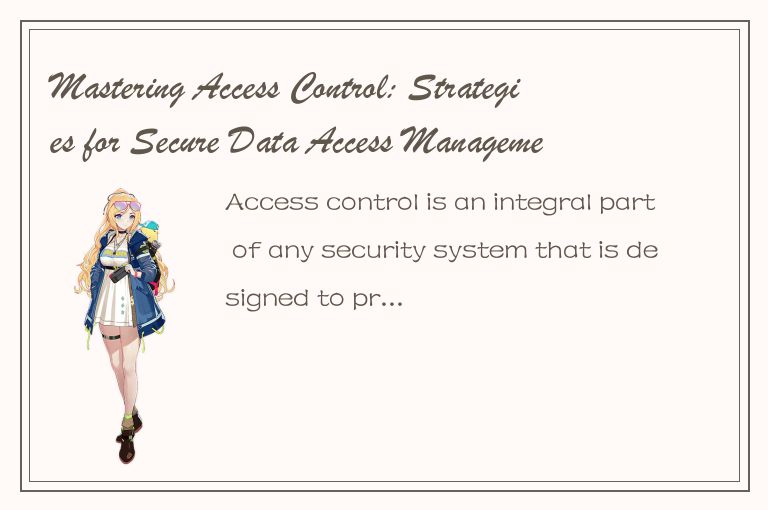Access control is an integral part of any security system that is designed to protect data, assets, and resources. In the current digital age, access control has become all the more essential. A large number of organizations now rely on cloud-based storage and applications. As a result, sensitive data and assets are out in the open and accessible to anyone with the right credentials.

Mastering access control is necessary for ensuring that only authorized personnel can access sensitive data and resources. Access control not only helps protect data from unauthorized access but also helps prevent data breaches and leakage.
There are different strategies for securing data access management. In this article, we will discuss some of the most effective strategies for controlling access to data.
1. Role-Based Access Control (RBAC)
RBAC is a technique that restricts access to information based on the job function of an individual. RBAC comprises three components: users, roles, and permissions.
First, create roles that fit specific job descriptions, then assign permissions to each role. A user is then assigned a role rather than individual authorizations. This limits what a user can access in the system, in compliance with their job functions. For instance, a manager will have more access to important files than a regular employee.
2. Attribute-Based Access Control (ABAC)
ABAC is a technique that assigns permissions based on the attributes of the user, resource, and context. This method lets you create dynamic access policies that align with an organization's guidelines as well as changes.
Attribute-Based Access Control allows access control based on attributes such as time of day, location, type of device, user role, and many others. It enables the creation of highly granular and flexible access control policies.
3. Rule-Based Access Control (RBAC)
RBAC is a policy-based access control technique that assigns permissions based on specific rules. In RBAC, users are given access to resources based on their attributes, but in a rule-based system, access is defined with the use of rules.
These rules usually are system-defined, but they can be created as needed by administrators. A rule could specify that all employees should access records during the day and not at night, or that sensitive records can only be accessed by senior managers.
4. Mandatory Access Control (MAC)
MAC is a security access control model used to confine user activity, making it impossible to exercise judgment, choices, or discretion. In mandatory control, access decisions are based on government or industry regulations, rather than user or administrator input.
MAC implements a central security policy, deciding who can access an object in the system and when to access it. The key function is that even administrators can not change the access policy, which makes it perfect for highly-confidential and sensitive organizational data.
5. Discretionary Access Control (DAC)
DAC is a technique that assigns permissions based on ownership. In this, control is given to the resource owner, who then specifies the access controls to apply to the resource. The owner is usually allowed to specify which specific individuals or groups can access a resource and the rights they have.
Ownership-based access control can be problematic since it allows the owner of the objects to control access rights. However, if the owner is infected with malware or has malicious intent, the data can become compromised.
Conclusion:
Access control is a critical aspect of data security, and the strategies for managing secure access are critical to organizational success. By implementing the right access control models, businesses can ensure that sensitive data remains secure, and unauthorized access is prevented.
In summary, Role-Based Access Control (RBAC), Attribute-Based Access Control (ABAC), Rule-Based Access Control (RBAC), Mandatory Access Control (MAC), and discretionary access control (DAC) are suitable techniques for securing your organization's data access management. However, organizations should consider the unique requirements and compliance frameworks before implementing any access control model. Mastering access control is essential, and selecting the right strategy is critical.




 QQ客服专员
QQ客服专员 电话客服专员
电话客服专员